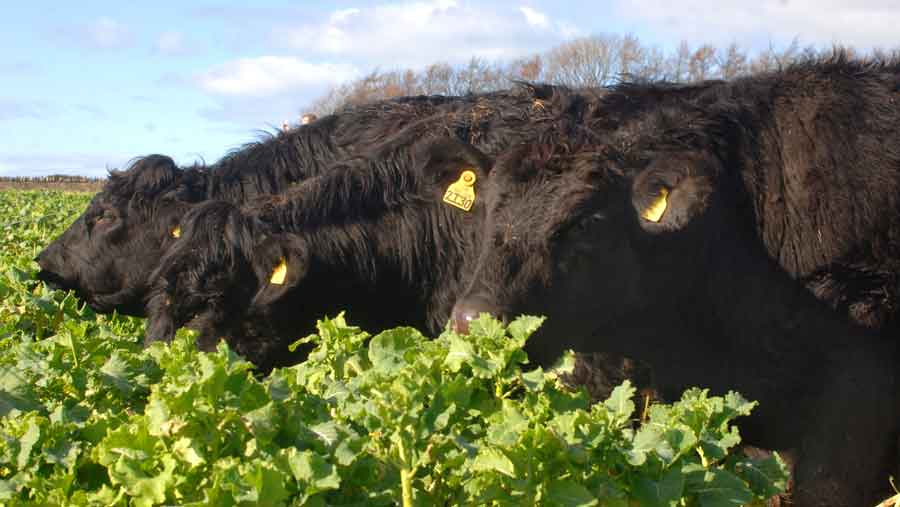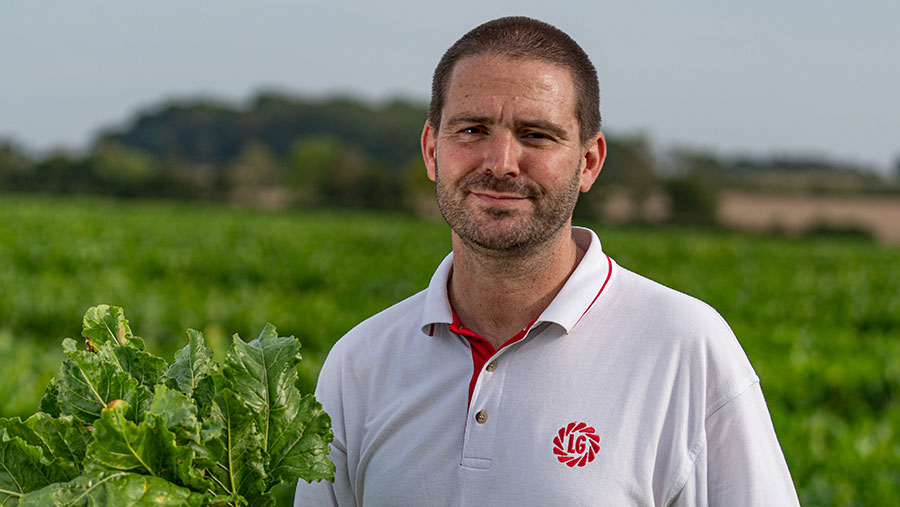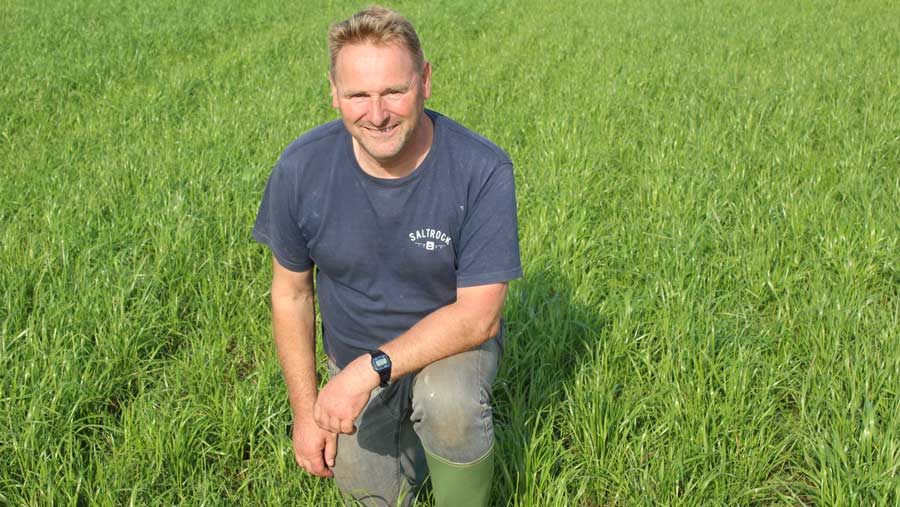Advertiser content
Advice on making the best of home-grown forages
 © Limagrain
© Limagrain Making better use of home-grown forages to reduce cost of production and improve sustainability starts with crop establishment and seed choice.
With carefully chosen seed mixtures, a grass sward can achieve high yields of a highly digestible, high protein crop for grazing or cutting whilst brassicas are highly flexible, providing either a summer catch crop or a main feeding crop in the winter.
The type of crop grown will depend on when a farm wants to use it but with all, good establishment is key.
For grass, whether the grower should opt for a spring or autumn reseed largely depends on soil type and climate.

John Spence © Limagrain
John Spence, Forage Crops Product Manager at Limagrain, said grass can be established from late March onwards.
“If you are including clovers or herbs within the mixtures for Sustainable Farming Incentive reasons as well as for the herbal benefits, it would be more into April or May when the soil temperature is a little bit warmer,’’ he said at a recent webinar.
Sunlight, moisture and good seed-to-soil contact are critical to establishment as, without those, agronomist Helen Daniels, said growers are “setting themselves up to fail.’’
For direct drilling, she recommends cross-drilling to avoid gaps that can cause weed ingress.
“It really does help with the weed burden because you don’t have those open rows,’’ she said.
“Keeping the seed rates up is important too – I can’t stress that enough.’’

Nick Zeale © Limagrain
At Woolacombe in North Devon, dairy farmer Nick Zeale has taken that advice on board. He uses the LG Sinclair McGill variety, Colossal® Silage, at 20kg/acre. “The reseed is up against bugs, diseases and slugs so you are cheating yourself if you keep the seed rates low, if you keep the seed rate up you get a good take,’’ says the fourth generation farmer, who milks 150 cows on a split block calving system.
When selecting mixtures, Mr Spence’s advice is to ensure they contain recommended varieties.
LG runs its own trials on recommended varieties, to establish feed value and their agronomical performance.
Mr Zeale is also a big advocate of pelleted clover, LG CloverPlus, overseeding with a fertiliser spinner in late summer.
The larger leaf varieties within the pellet are competitive. “It has worked really well for us,’’ he said.
As clover seed is small, it can be tricky to calibrate drills. Also, when broadcasting on a windy day, it can result in an uneven distribution of seed. “With pelleted clover you have a much better chance of getting good seed-to-soil contact,’’ said Mr Spence, who recommends applying at 2kg/acre.
Nick also grows fodder beet and has done so since 1985, describing it as a “valuable part of our cows’ ration’’.
“It is a real butterfat driver,’’ he said, with butterfats currently averaging 4.9% in his mostly Holstein Friesian herd.
He grows LG’s Robbos, the biggest selling fodder beet variety. Growers can expect a freshweight yield of 80-100t/ha and an ME of 12.5-13% MJ/kg DM.
Long and short season brassicas, including kale, swedes, forage rape and stubble turnips, are also options for additional feed. Again, good establishment is vital, because of flea beetle challenges in particular.

Helen Daniels © Limagrain
Ms Daniels advises spraying when flea beetles are most active, often at night. “Add a foliar feed when going through with a pyrethroid to give the plant a ‘kick’, getting it up and away as quickly as possible and to get those roots down.
“It’s vital to make sure the micronutrient demands are met as well as the nitrogen, phosphate and potash requirements.’’
Provided by
LG is the strategic global brand of Limagrain Field Seeds. LG’s been serving farmers with premium seeds for 60 years and is present across 6 continents and all major crops.
